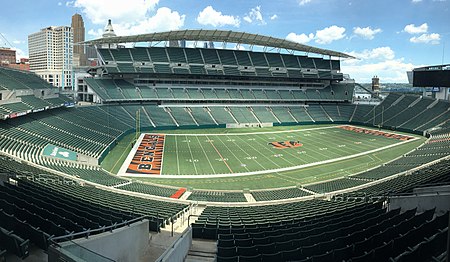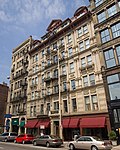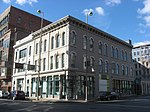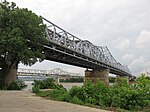Paul Brown Stadium

Paul Brown Stadium is an outdoor football stadium in Cincinnati, Ohio. It is the home venue of the Cincinnati Bengals of the National Football League and opened on August 19, 2000. Named after the Bengals' founder Paul Brown, the stadium is located on approximately 22 acres (8.9 ha) of land and has a listed seating capacity of 65,515. Paul Brown Stadium is nicknamed "The Jungle", an allusion to not only the namesake Bengal tiger's natural habitat but also the Guns N' Roses song "Welcome to the Jungle", which is the team's unofficial anthem. It is one of three stadiums in the NFL not named after a corporate sponsor, the others being Lambeau Field (Packers) and Soldier Field (Bears).
Excerpt from the Wikipedia article Paul Brown Stadium (License: CC BY-SA 3.0, Authors, Images).Paul Brown Stadium
West Pete Rose Way, Cincinnati Central Business District
Geographical coordinates (GPS) Address Nearby Places Show on map
Geographical coordinates (GPS)
| Latitude | Longitude |
|---|---|
| N 39.095 ° | E -84.516 ° |
Address
Paul Brown Stadium
West Pete Rose Way
45203 Cincinnati, Central Business District
Ohio, United States
Open on Google Maps








